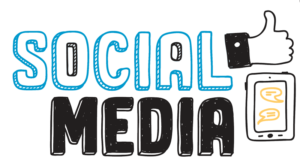Making Social Media More Accessible to People with Disabilities
Updated: August 23, 2024
Social media is a very popular tool among people with disabilities to stay connected despite the fact that most social media tools are not fully accessible. Staying connected electronically is even more important if a disability prevents a person from being able to easily travel. By posting pictures or videos of themselves and discussing issues that impact them every day, people with disabilities are also bringing awareness to their very particular and personal issues.

Many people posting content to social media platforms – for either personal reasons or as part of their job – do not consider or use accessibility features. While the social media platform may not be friendly to all forms of assistive technology, companies can and do control the content they post and should take the necessary steps to make that content as accessible as possible. In many cases, even if the platform doesn’t natively offer accessibility tools, workarounds can be implemented to improve accessibility.
Without mentioning any one platform, here is an initial list of accessibility principles that companies should be following with respect to their social media campaigns.
Provide text descriptions for all non-text Visuals
All non-decorative images and videos should have a text alternative to match the visual information being conveyed.
Informative Graphics
Some social media tools allow you to specify a description for an image, in other cases, text alternatives for informational images must be placed in the body of the post.
Closed Caption (CC) Videos
All videos should be closed-captioned. Even if the audio track is empty or only contains music there should be an appropriate caption such as “no sound” or “waltz” or “Elton John Bennie and the Jets.” I personally love the BBC guide to determine what level of captioning detail should be used since it takes into account context. If subtitles are being used instead of closed captioning, it is important to frame the key material so the subtitles do not cover up important visual elements.
Companies like 3Play make captioning easy to accomplish. You upload the video, pay only for the duration of the content, and *boom* you get back a 99% accurate transcript, usually within 24 hours. As the parent of a deaf daughter, I can tell you there is no excuse for either relying on YouTube automatic captioning (which is 65% accurate at best) or no captioning at all.

Evaluate your videos for Descriptive Audio
Descriptive Audio (aka Audio Description, and sometimes referred to as AD or DA) should be created for videos that contain informational content which is not conveyed on the audio track. Think of the Wizard of Oz. How would a person with significant vision loss know that the Munchkins were people of short stature or that Toto was a small terrier unless it was specifically mentioned in a descriptive audio soundtrack?
Descriptive Audio is not always required. Multimedia where the content is largely conversational, such as vlogs or interviews don’t typically require DA since the content is more conversational and will more likely be fully conveyed via the audio track rather than through visual cues. On the opposite end of the spectrum, anything animated almost always requires an AD soundtrack, because much of it is visual-only.

For videos that are going to get hundreds of thousands of views, I recommend the live voice. While it is more expensive (around $600 for a 5-minute video) it is meticulously professional and time-synchronized with the video. With live voice, you can more easily match the ethnicity and speech patterns of the video participants. My vendor of choice for live voice DA is Bridge Multimedia. Bridge does descriptive audio for Saturday morning cartoons. If you can do DA for Saturday morning cartoons, you can do DA for *anything*.
Use enough strong contrast in color choices
Text should have a good contrast ratio against its given background. Because most social media is viewed on a mobile device, a best practice would be using a minimum threshold of 5.0:1
Don’t embed text in your images
When you embed text in images, it becomes pixelated (i.e. gets fuzzy) when magnified, making it very hard to read in a “zoomed in” state. A few other font-related best practices include:
- Use only sans-serif font families – serif fonts make things harder to read
- Don’t use an overly ornate script
- Don’t use a lot of italics
Make your link text short and understandable
Social media posts typically contain links. Where possible, use link text that is easily understandable. Having your link text be the URL of the link, while common, is very undesirable from an accessibility perspective. It takes a long time for screen readers to announce all the useless information like http://www/ and the top level domain identifier at the end such as .com or “.co.uk” While that may not seem like a lot of extraneous information, on a link heavy page it can add several minutes to the time for a screen reader user to listen to the information announced. Where a link cannot be formatted to be optimally accessible, use a URL reduction tool (something like bitly.com) to reduce overly verbose (and not useful) screen reader announcements.
Contact Information
Provide a means of easy contact, should a user encounter access issues. You can provide an email address (such as [email protected]), a phone number with a user trained in receiving relay calls from the deaf, or both.
External Links to Social Media Accessibility Pages
Where relevant, include contact information to reach accessibility teams within each social media company, allowing the user direct and immediate access to the help they need with the social media infrastructure (as opposed to the company content).
Use multiple social media channels
Due to social media infrastructure accessibility limitations, it is strongly recommended to use more than one social media channel for any single campaign. This will prevent reliance on one platform providing a completely accessible experience, as at present none do. Adding “best experienced on [blank] when using <assistive technology>” commentary is good. If someone is trying to view something on Instagram and it says “best experienced on Pinterest when using screen readers” with a link to the Pinterest location, that will help screen reader users locate the optimal environment for them.
Conclusion
While no social media platform is 100% accessible at this time, there are many things that social media content managers can do to standardize and improve the accessibility of the content they are posting. Providing closed captioning and descriptive audio for multi-media, using accessible, unembedded text with strong contrast, and adding descriptions for all graphics go a long way to sending the message “we care about our customers with disabilities.”








